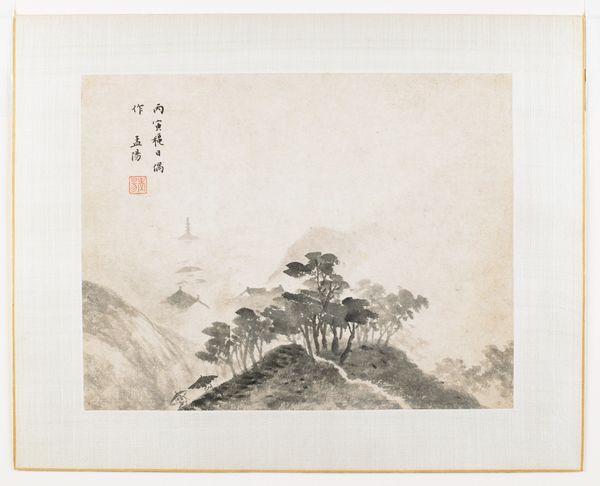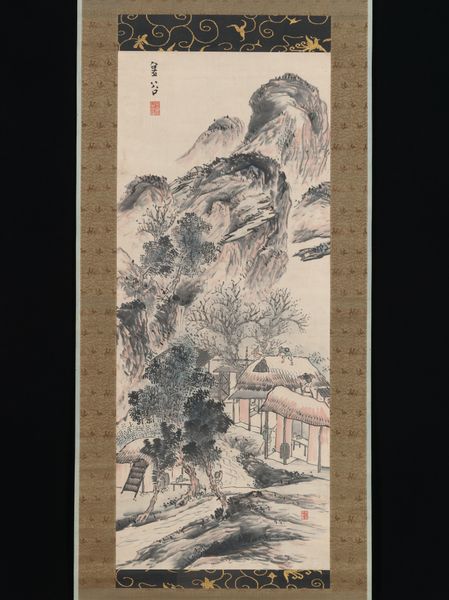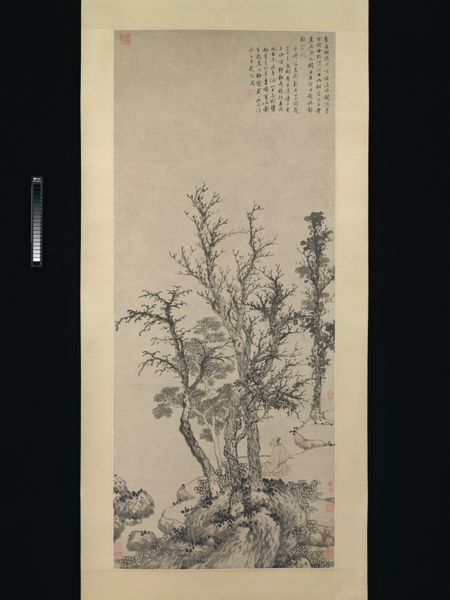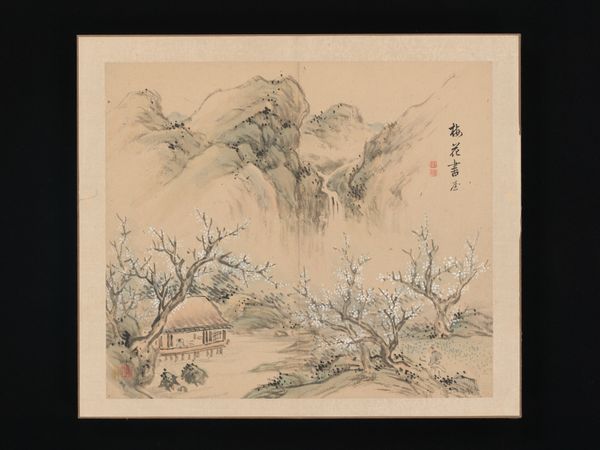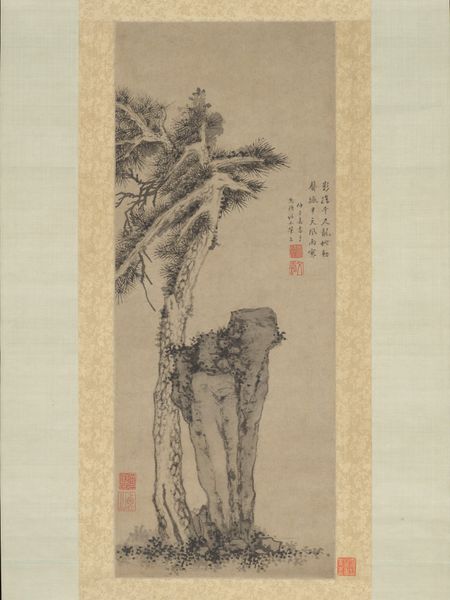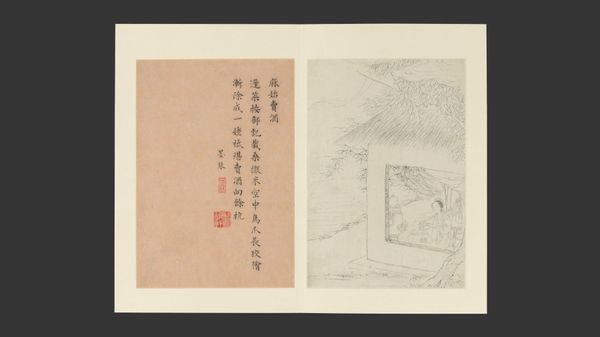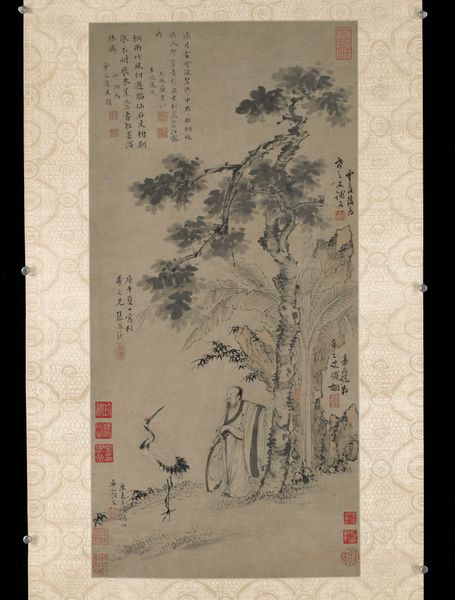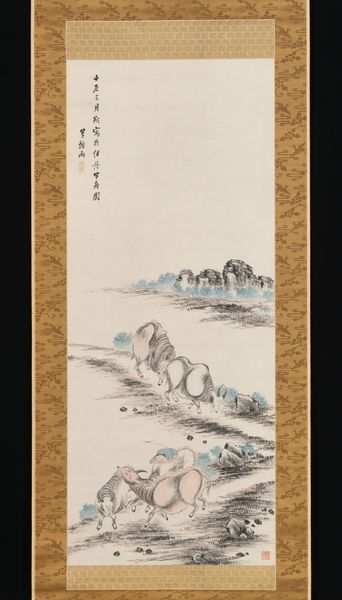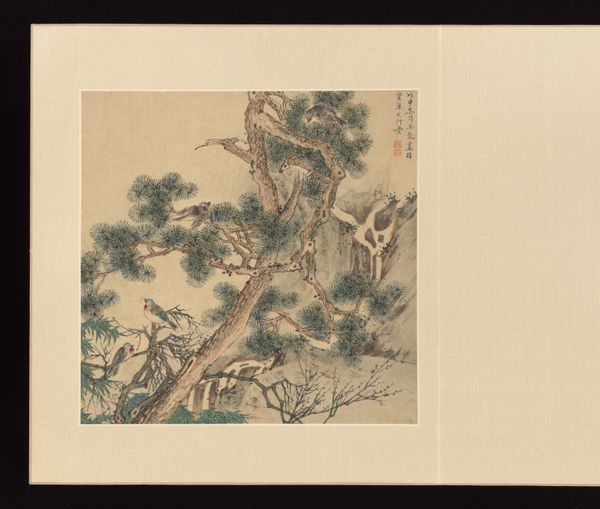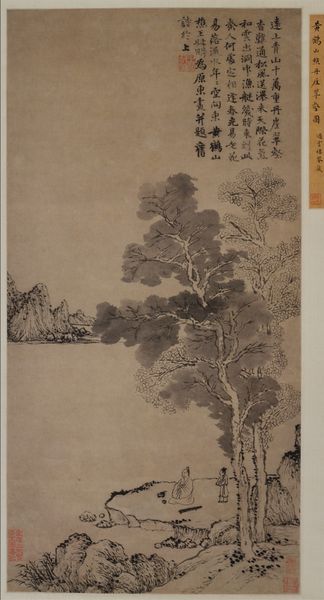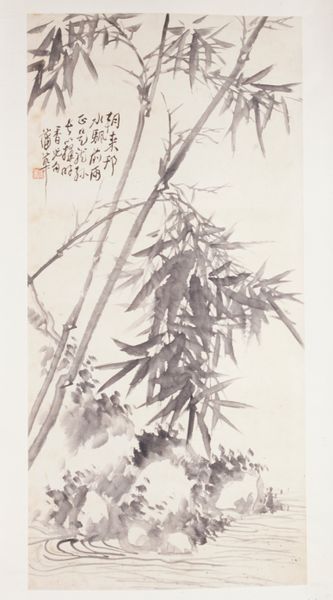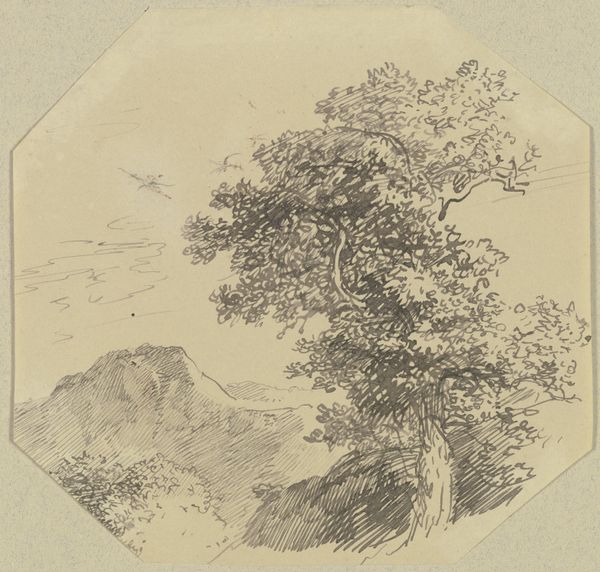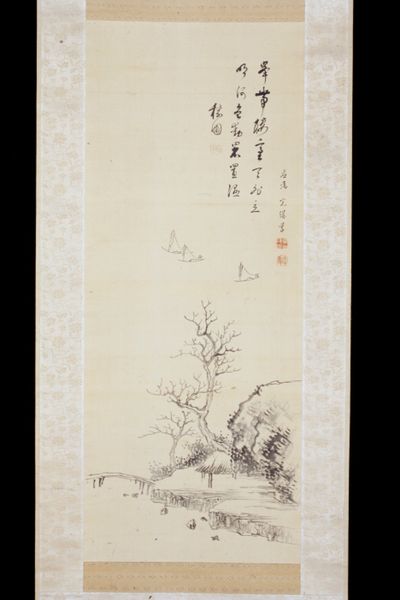
Dimensions: Image (each): 10 3/4 in. × 13 in. (27.3 × 33 cm) Mat (each): 18 × 18 in. (45.7 × 45.7 cm)
Copyright: Public Domain
Curator: The ink and watercolor work before us, created in 1883, is entitled "Ten Sites Associated with Ruan Yuan," attributed to Wang Jun. It resides here at the Metropolitan Museum of Art. My initial impression is how subdued and intimate it feels. Editor: It strikes me as incredibly serene, almost melancholic. The pale washes of ink create a world that's both tangible and dreamlike. There is such a gentle composition here. Curator: The landscape is very simplified. In many ways this composition speaks volumes about literati culture at the time, and its idealized, retrospective views. Ruan Yuan was a prominent scholar and official. Images of sites connected to a famous figure would have spoken to cultural memory, linking the viewer to an established lineage. Editor: It’s intriguing how this connects with the concept of "place" in art. This artwork isn’t just a landscape, it represents cultural memory and an ongoing relationship with a figure revered within specific social and intellectual circles. This artist’s decision to depict these specific locales offers insight into their values, reflecting a nostalgic view of history. Curator: Consider how that cultural significance gets translated visually. We see ink, watercolor, the compositional elements… It’s rendered with a delicate, almost understated hand, reflecting a personal engagement, not a grandiose proclamation. There's a reverence at play, linking emotional connection to the specific location, but there is also some suggestion of its folk roots. Editor: Yes, a private communion, maybe? Folk art, after all, often serves as a community’s touchstone. We see in Wang Jun's choices the desire to portray, preserve and re-activate community history by means of artistic creation. This act solidifies communal awareness through visual interpretation, allowing the viewers a more tangible understanding of that history and how it shaped their society's identity. The bridge in time and history building here is fascinating. Curator: Precisely. What’s so beautiful about approaching this particular art object is seeing how Wang Jun successfully links that reverence and sense of communal identity to these “sites”. Editor: Indeed, there’s a layering here – not only of medium but of cultural understanding. It invites us to consider what aspects of culture we visually perpetuate and celebrate in contemporary art, but more so the idea of history being retold through personal engagement.
Comments
No comments
Be the first to comment and join the conversation on the ultimate creative platform.
